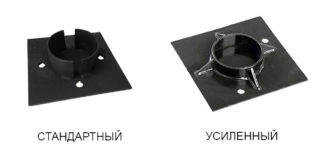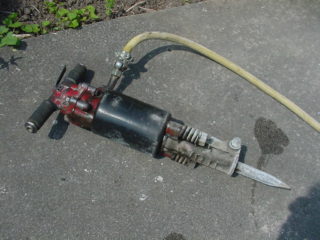The operation of the foundation depends on the installation method and the material at the end of the pile, with which the tongues are attached to the grillage or solid slab. The pile head provides strength, durability of the axial support structure. Combinations of concrete and steel, wood and metal are used in screw, rammed and driven elements. In some cases, the support pile system, together with the tops, does not find competitors.
Description of pile head
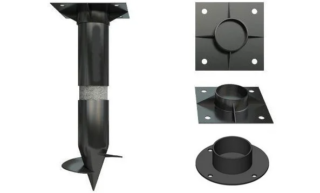
A pile is a core part that transfers forces from the above-ground part of the structure to the ground using the heel and side area. The upper part is called the head, it is securely fixed to the tongue. The dimensions and shape of the top vary depending on the installation of the connecting beam and the monolithic base.
Welding is performed on the surface of the head:
- a glass is welded to the site;
- reinforcing parts (kerchiefs) are attached.
The strength of the pile head is checked by instrumental measurement and visual inspection with the identification of defects. At critical facilities, the method of ultrasonic diagnostics and capillary deep flaw detection is used.
Device and purpose
The tops of the rods perform the following functions:
- fix the grillage in the installation position;
- fix the common frame with connecting ties.
The size of the tip depends on the size of the pile and the specific gravity of the material of its manufacture. The inside diameter of the head must be larger than the outside diameter of the pile in order to slide over it.
Varieties, sizes and functions
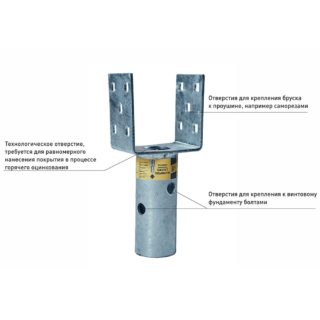
The top of the vertical support is in the form of a circle, square and polygon, the outline is chosen in the image of a pile rod. The types of headrests differ in the way they are fixed.
Depending on the shape and function of the tops are:
- T-shaped. They are bolted or welded to the inside of the support. This shape allows you to mount the slab formwork for the next concreting.
- U-shaped. They are put on the pile from above. Designed for installation of grillages and beams.
The rods are made of wood, concrete, but reinforced concrete and metal screw varieties are common. Supports are made collapsible and non-removable.
Reinforced concrete
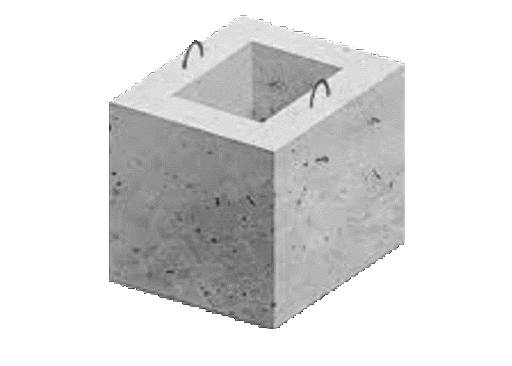
Piles are made 3–12 meters long, often with a solid section in the form of a square. Reinforced concrete rods with a triangular, round, complex prismatic base are produced. Inside there is a reinforcement in the form of a three-dimensional frame to resist the loads from the structure and the forces during immersion. At the top of the pile, the volume of structural metal increases in the form of a reinforced head.
The head for a reinforced concrete pile has a minimum dimension of 20 x 20 cm, the length of the rod is determined by the load from the building. The installation of piles and alignment of the heads are expensive.The simple structure is welded in the form of a steel sheet with installed packing rings and stiffeners in the form of ribs.
Wooden
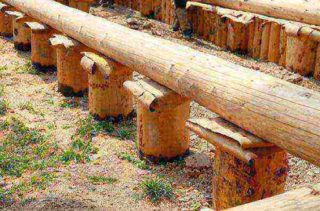
For such supports, coniferous woods with a reduced ability to absorb moisture are used. Long logs with a diameter of up to 40 cm are placed, pre-soaked with anti-rotting compounds. Timber supports are packaged, single and composite, submerged with mechanical and diesel hammers, vibratory pile drivers.
At the ends of the rods, metal shoes are arranged in the form of a tetrahedral or triangular pyramid. They take the load from impacts during penetration and do not allow the sharpened wood tongue to deform and delaminate. The pile head is made of sheet steel or cast iron and protected by a yoke in the form of a metal ring.
Screw
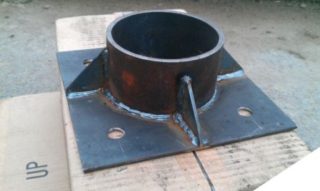
In construction, this type is represented by steel pipes (diameter from 50 to 350 mm) with blades at the bottom, which enter the ground with helical movements and are subsequently concreted inside. The wall thickness of such piles is 4 - 6 mm, and the length varies from 4 to 12 meters. The toe of the rod is pointed, and the end of the ground part is equipped with a metal cap for screw piles, which is welded to the outer shell of the pipe.
The design of the top depends on the significant characteristics of the grillage, which supports the first crown of a bar, a monolithic base or a reinforced concrete beam lintel. The head of the screw pile is made of high quality structural steel, the end element is treated with alkyd-based primers.
Collapsible
Removable ends are used less often of non-separable types, they are used in the case of a temporary structure or when manually installing support elements.
The grooves are drilled crosswise in several places, and studs or bolts with nuts are placed instead of welding. Correctly designed support with good tightening of hardware has no backlash. Collapsible heads are used when concreting a base in heavy soil or when installing wooden dowels. Removable ends are manufactured at the plant in series, each of which is assigned standard dimensions, SP-5 steel is used.
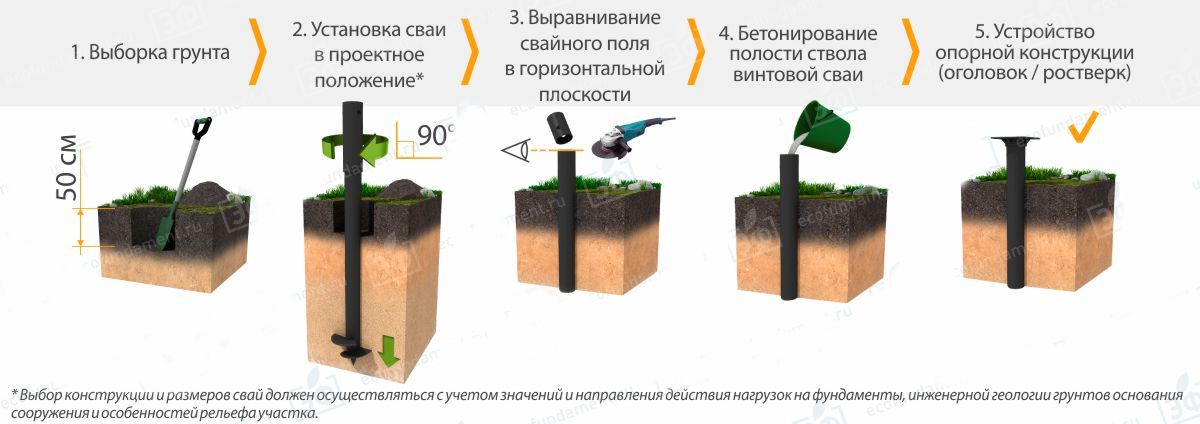
Non-collapsible
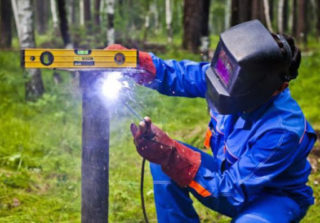
The welded head of the foundation is placed when the holes are excavated with the help of a hole drill, the positive point is to prevent moisture and oxygen from entering the support. Before welding, the edge of the head is highlighted with a file, cleaned with a grinder to a width of 3 cm.
Installation diagram:
- setting the top to the control position;
- tacking with an electrode at several points;
- full-fledged welding;
- leaving a ventilation outlet;
- slag stripping and painting.
Welding is carried out with electrodes of universal action, designed for a current of 100 A.
Piles with a section of 57x57, 76x76, 76x89 mm are placed under small buildings. The size 89x89 and more is used for the construction of houses on unstable soils.
Head cutting methods
Pile supports with inclined and horizontal cracks, which expand more than 0.3 mm, are reinforced with a reinforced concrete cage with walls no thinner than 100 mm or completely change. The tops are cut off after the pipes are fixed in the ground. The head is placed on the pile pipe after cutting the reinforcement inside the reinforced concrete.
To cut off the ends of the rods, the following method is used:
- jackhammer;
- hydraulic shears.
The first method has the disadvantage that the cut site is of low quality due to irregularities. There is a risk of damaging the surface below the scribe line. The method with the help of hydraulics copes with the task more accurately, but is distinguished by its high cost.
Installation methods
An open fit means that there is a hole in the center of the head to enter the inside of the rod. This is useful if the pile is delivered with the end already installed at the factory. Another option would be to lay communications in the body of the pile. An open hole receives sediments inside, therefore, such a head is covered with a counterpart or sealed with water-repellent compounds, for example, resin or bitumen.
Hammer
The chipper breaks off particles of concrete from the upper surface of the pile, which is recognized as unnecessary by measurements. The process is laborious, takes a long time, so a team of three people chops off the heads of 15 supports during a working day.
On the tongue, a marking line is marked (drawn) along which the supporting element should be shortened. Small parts are gradually removed with a hammer until the required mark is reached. A mechanical hammer is sometimes used, such as a diesel device. The hammer is methodically dropped to the surface, and the rise is due to the recoil. The hammer is more accurate because no kickback or drop occurs.
Hydraulic shears
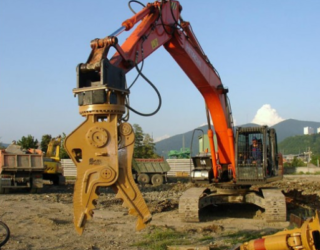
Versatile equipment allows you to do better work and level the surface. Piston cutters synchronously destroy and remove unnecessary pieces of the pile top. The scissors are put on different equipment of suitable power, with hydraulic feed. Retrofitting to an excavator or tractor is done to reduce the operating cost of the hydraulic shears.
The ends of the support are cut using circular saws, machine milling cutters, and hand-held devices. Labor costs with such an economical method are small, the work goes faster. The correct cutter diameter is selected and the optimum working mode is established.
Recommendations
The anti-corrosion layer is removed a couple of centimeters from the cut when shortening the metal rods in order to increase the life of the pile supports. The installation of the heads is done after leveling the area at the end, after which the level line of all piles is checked.
The grillage is mounted after measuring the plane of the heads, which must be perfectly aligned, without any difference in marks. The metal tops are welded by an inverter converter with a current of 100 A. The concrete tops are sealed with mortar after the formwork is installed under the foundation.

